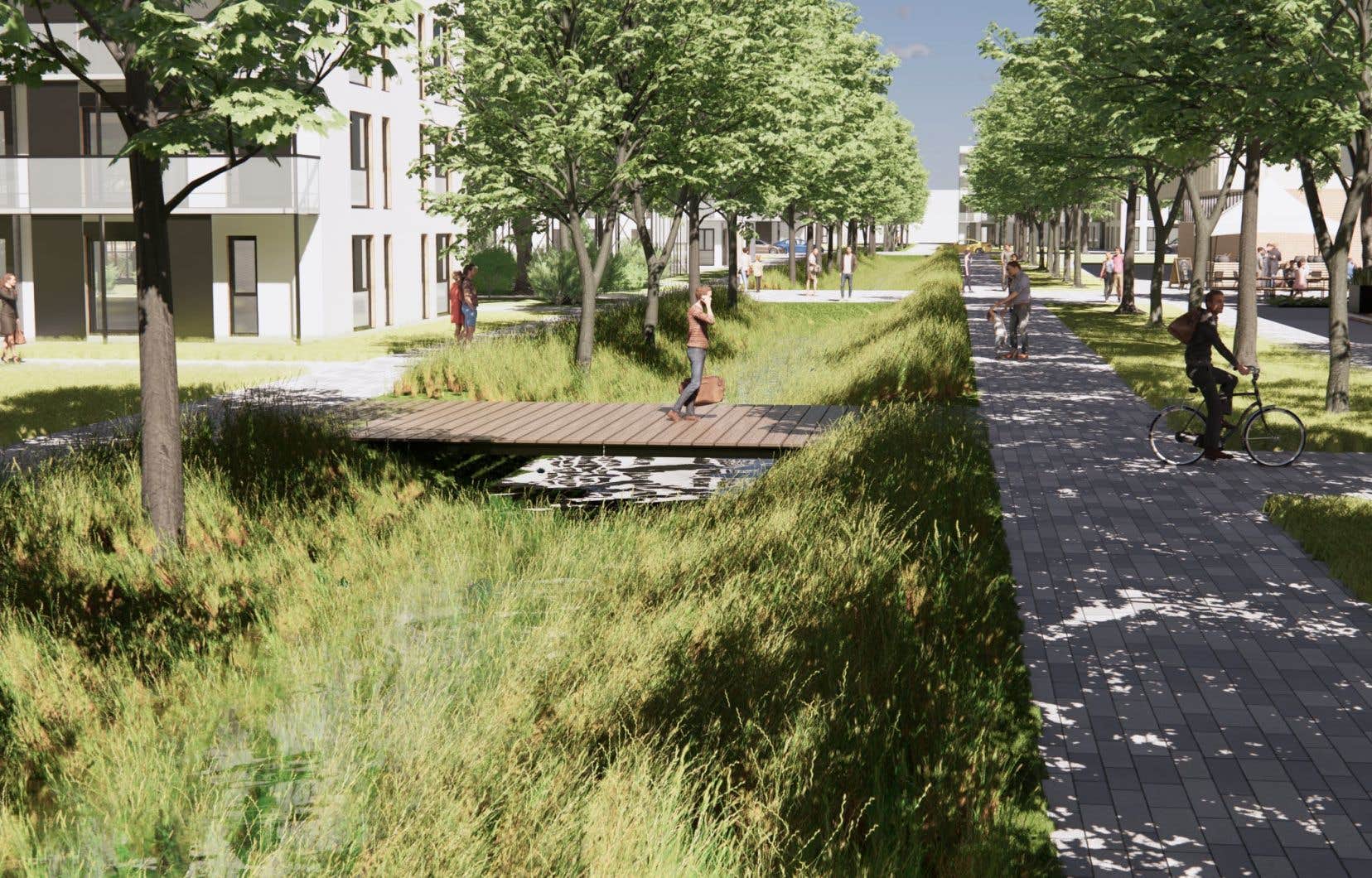This text is part of the special Real Estate section
Eco-neighborhoods are sprouting up almost everywhere in Quebec. From Montreal to the Magdalen Islands, dozens of projects are expected to see the light of day in the coming years. In the heart of the metropolis, here is one that combines social and environmental awareness.
In the Ahuntsic-Cartierville district, the Louvain Est eco-district project is about to come to fruition after almost 15 years of citizen mobilization and a good number of procrastination with the various local stakeholders.
“The project is the result of a long citizen mobilization which began in 2009,” explains Carole Brousseau, closely involved since the beginning, with the organization Solidarité Ahuntsic. The project took different forms over time to arrive at an eco-district. In 2017, the project became a campaign issue during the municipal elections, which gave us a boost. »
The location of the site, which formerly housed a municipal pound, is located on rue Louvain Est, between rue Saint-Hubert and avenue Christophe-Colomb. The surface area of the municipal property is estimated at approximately 8 hectares. A large laboratory for eco-district designers.
“The idea is to design a resilient neighborhood and possibly a refuge from climatic hazards,” adds Jean-Paul Boudreau, architect and general director of the Société de développement Écoquartier Louvain (SDEL). We want to put the human dimension at the center of the project, and we want to do it in the most eco-responsible way possible. »
The future eco-district provides between 800 and 1,000 affordable housing units, including at least 50% social and community housing. The instigators of the project also want to create spaces dedicated to market gardening as well as a wooded area which would serve as an island of freshness.
“We also want to focus on sustainable mobility; there is very little parking, we are pushing the bill a bit, admits Carole Brousseau. But since an entire neighborhood will be created, new residents have the choice of whether or not to join. We build a living environment with a clear vision. »
Sustainability as a central objective
The design of the Louvain East eco-district relies on shared governance between representatives of the City of Montreal, the Ahuntsic-Cartierville district and the community sector. In terms of participatory democracy, the project aims to set an example.
“What we do is quite unique,” says Jean-Paul Boudreau. A broad and holistic vision is very rare. We work on the social aspect and the question of interaction between people, we want to develop this vision of living together. And all this is done with collaboration between different levels of actors. »
When asked about the sustainability of social housing in the neighborhood, a particularly sensitive aspect in the current context of the housing crisis and the phenomenon of “ecogentrification”, Carole Brousseau and Jean-Paul Boudreau insist on the fact that this aspect is a priority. How to achieve this? By obtaining a social utility trust (FUS).
“The idea of the trust is to preserve and maintain, I will say a big word, for life the affordability of housing,” says the committed citizen. We want to widen the gap between the speculative market and our affordable prices. »
Incorporated into the Civil Code of Quebec in 1994, the FUS is a legal tool that allows a property to be excluded from the real estate market. In other words, the property, here the eco-district and its housing, would be allocated to a vocation rather than for the benefit of a person or an organization.
“These are new ways of doing things,” argues the architect. The social utility trust would only be the second time we have seen it in this type of project (after the Angus eco-district). We want to sustain a living environment that is focused on social and environmental values. »
If the eco-district project can count on the support of the mayor of the Ahuntsic-Cartierville district, Émilie Thuillier, since her election in 2017. For Carole Brousseau, obtaining a social utility trust is also a way of securing the project in the event of a possible change of government.
“Of course, we want to work with the elected officials in place,” said the retired community organizer. But various municipal changes in direction have delayed the project since its beginnings. With the FUS, we would protect the eco-district once and for all. »
When the final details of the trust are settled, something which will not take long according to Carole Brousseau, the first shovelful of earth can take place. The realization of a long mobilization, where citizens allowed themselves to dream of a neighborhood adapted to the social and environmental challenges of the future.
This content was produced by the Special Publications team at Duty, relating to marketing. The writing of the Duty did not take part.
